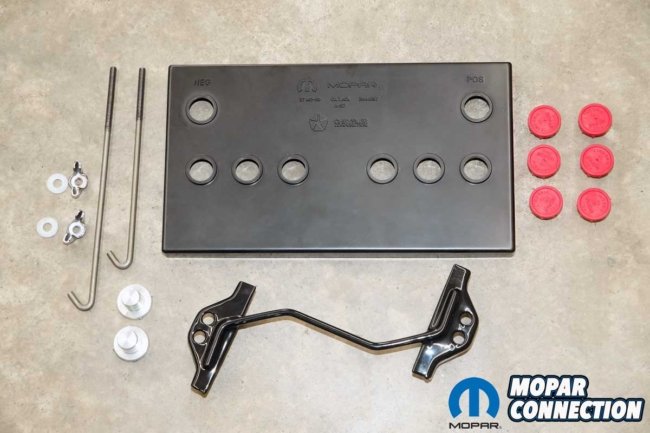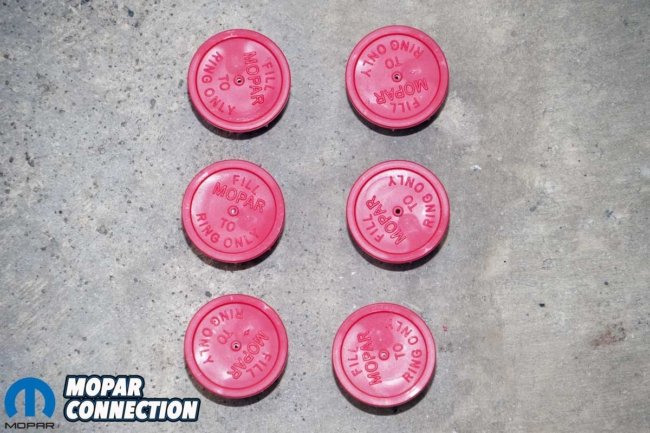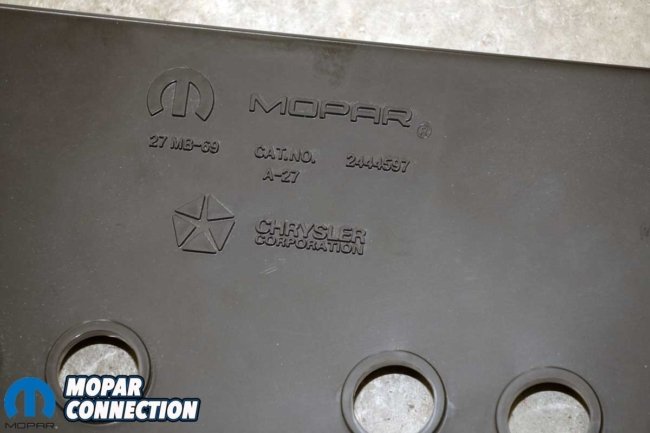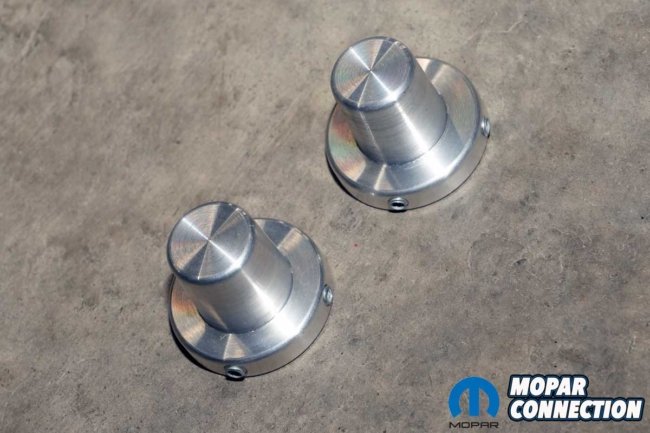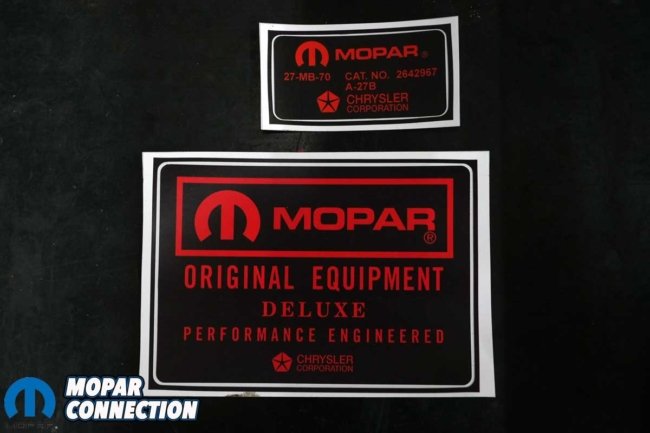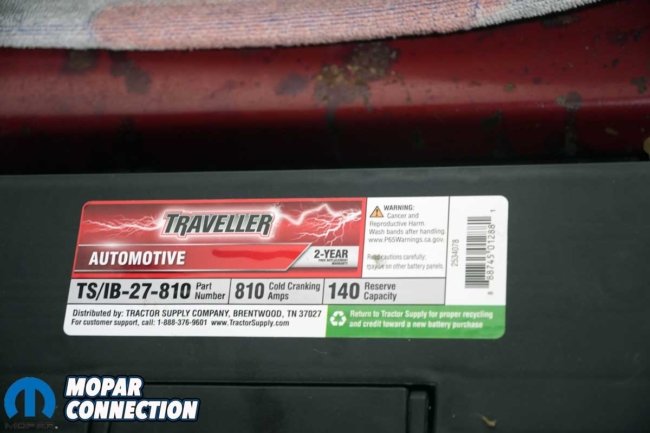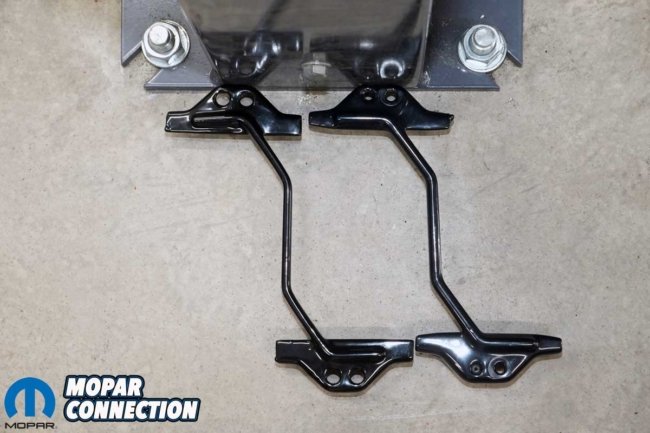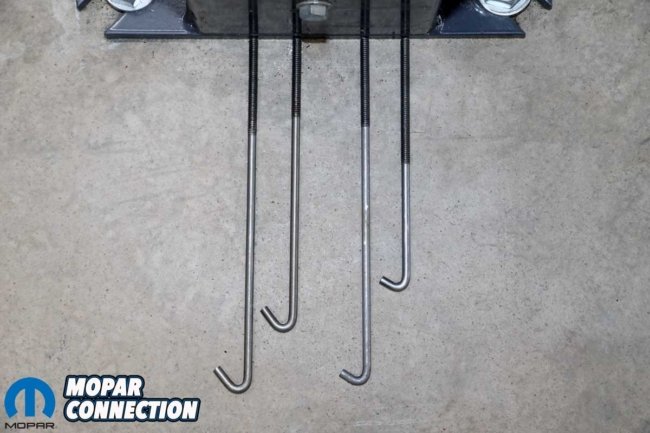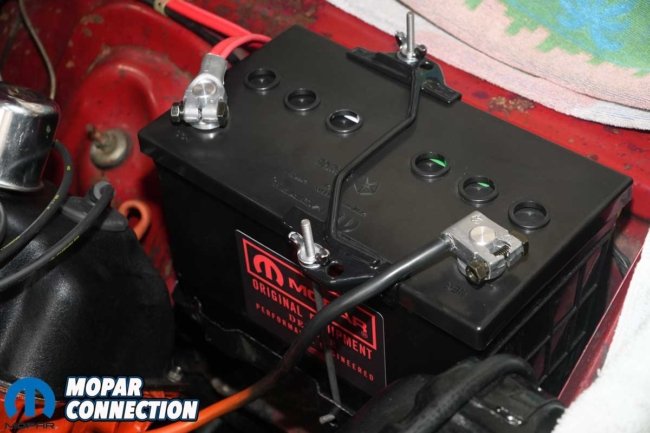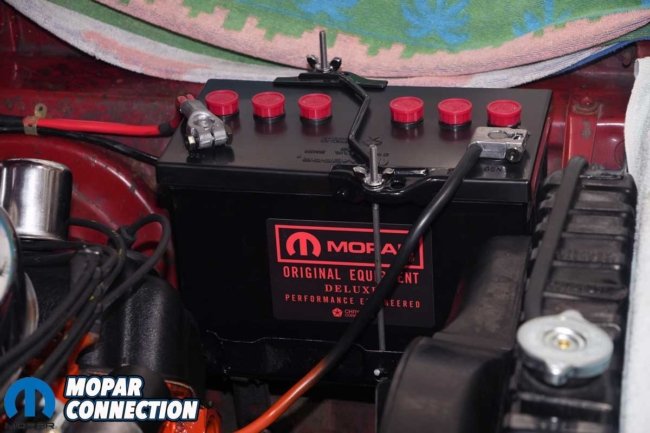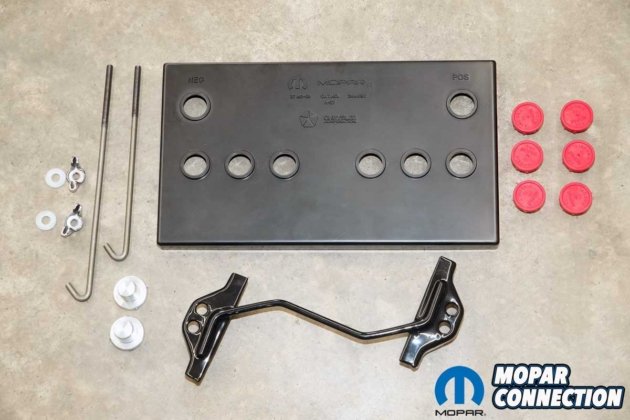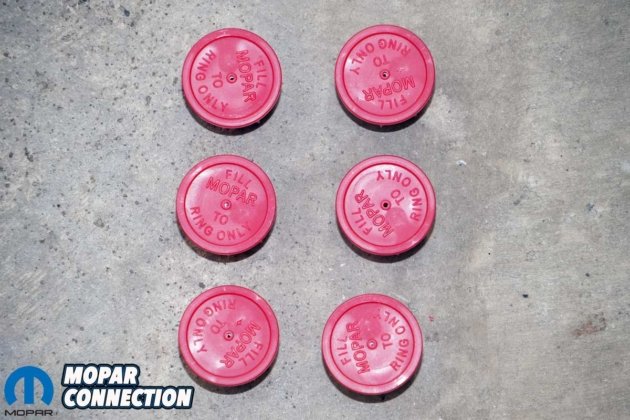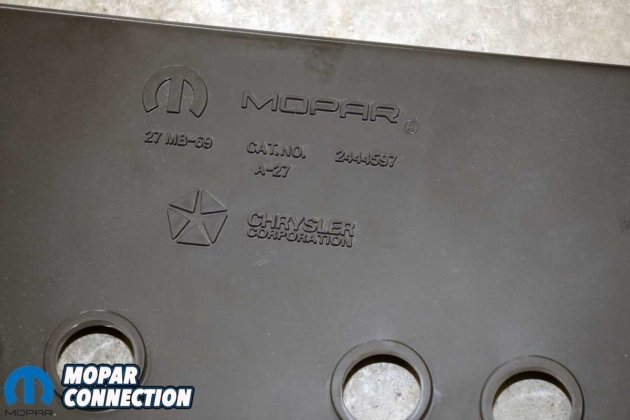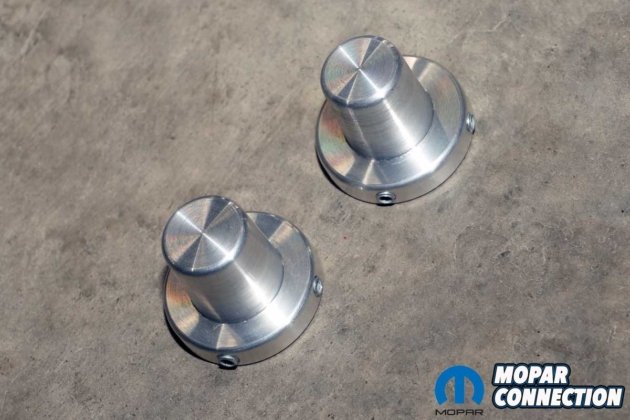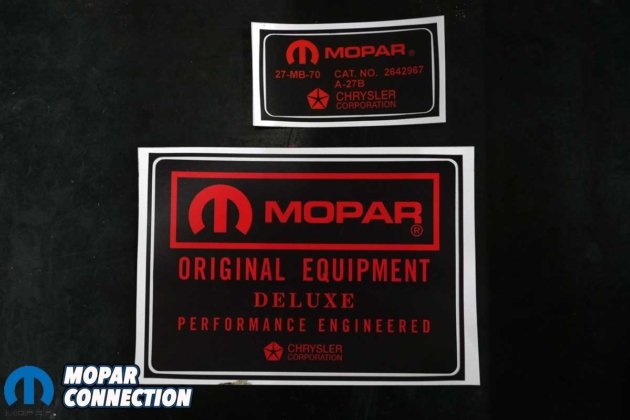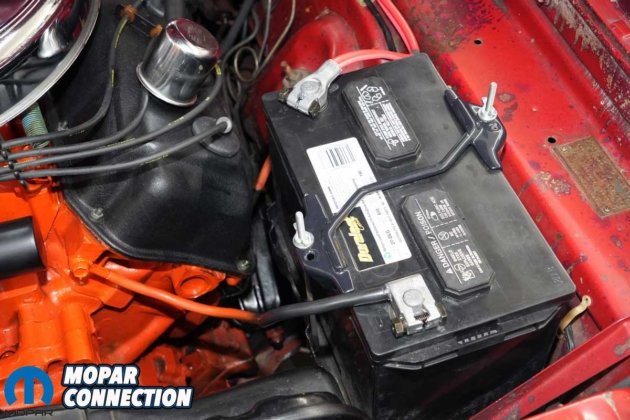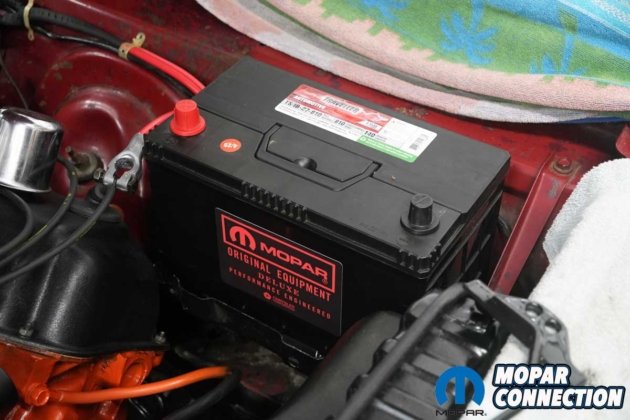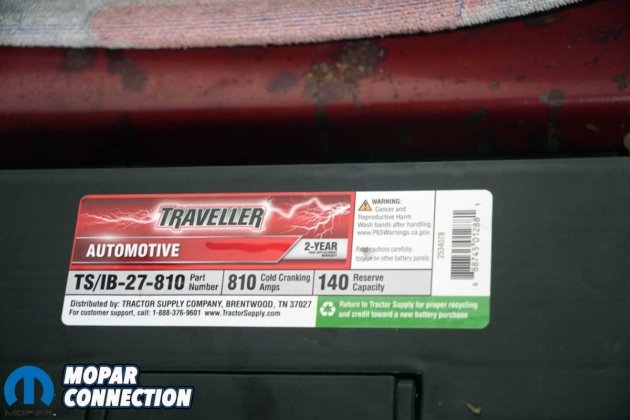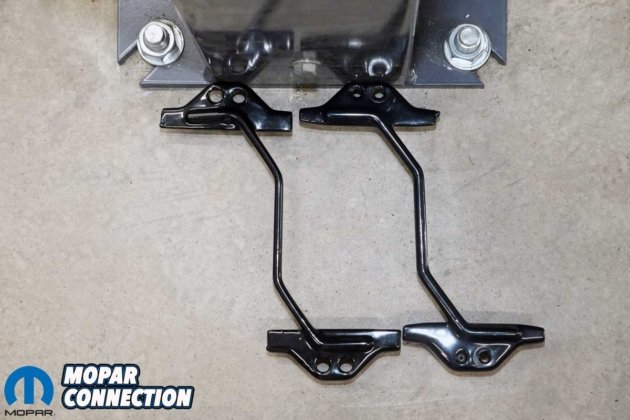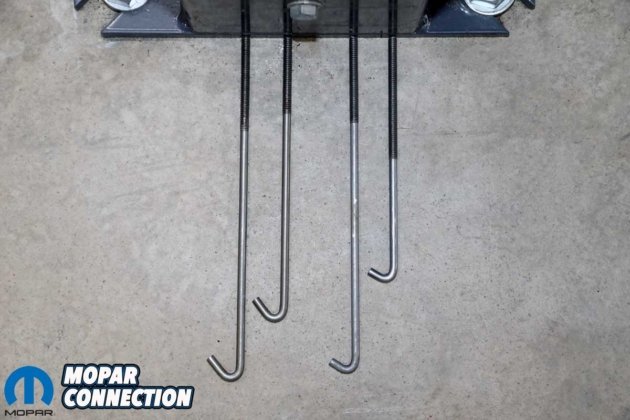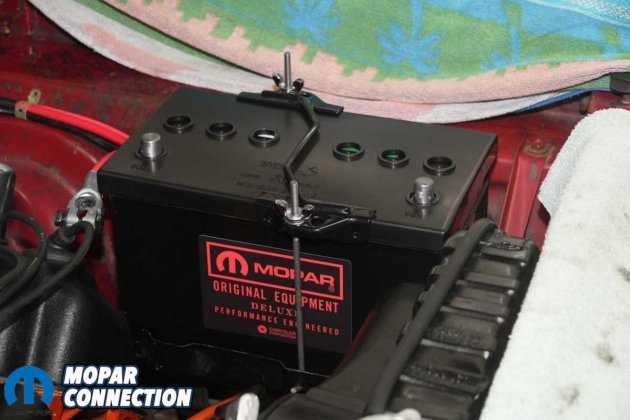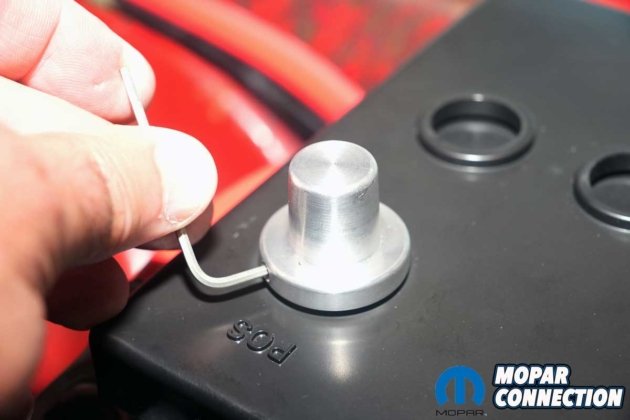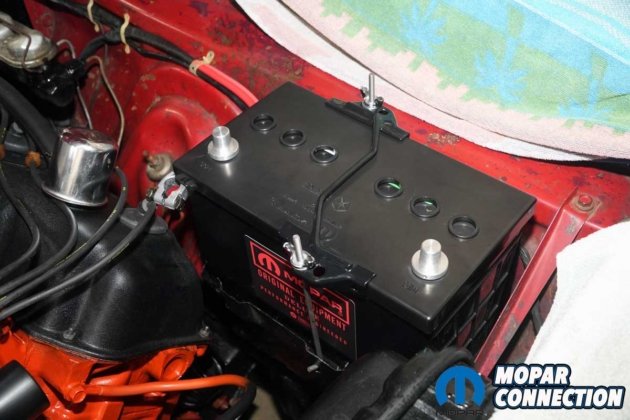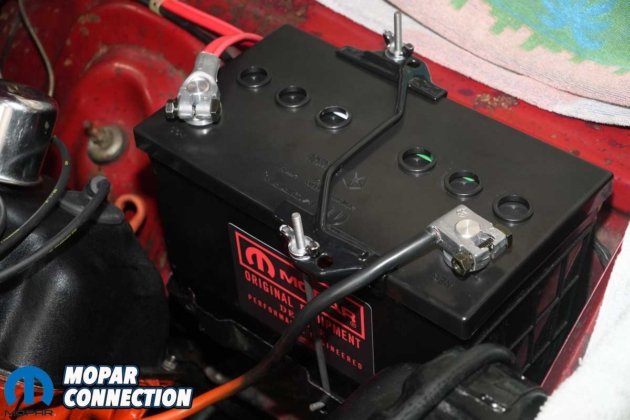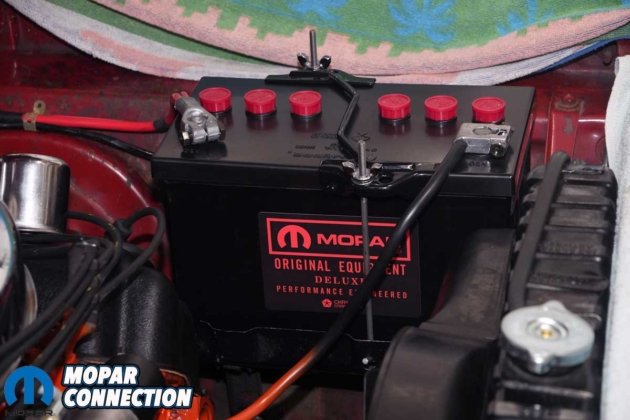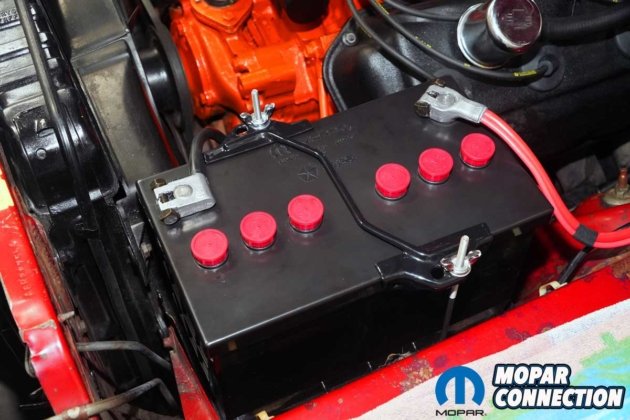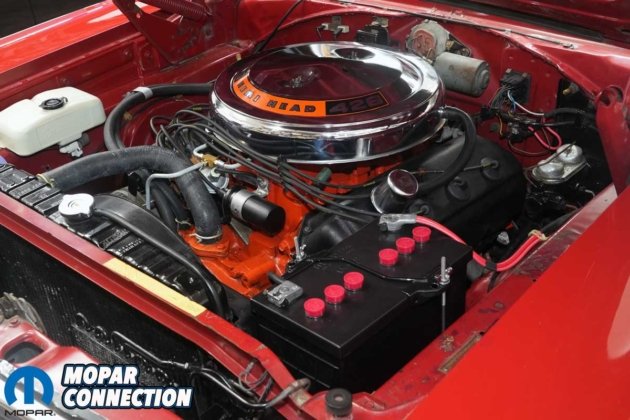
Restoring our 1968 J-code Road Runner has been a long and rewarding process. With most of the mechanical work behind us, we have shifted our focus to visual accuracy, ensuring the little details are correct that make the engine bay period accurate.
Above Left: The YearOne battery topper kit for our Road Runner came complete with a Group 27 cover, reproduction-style caps, a wider hold-down, longer J-hooks, washers, wing nuts, and post extenders. Above Right: The six battery caps replicate the original appearance. Group 27 batteries, like ours, feature red caps, while Group 24 batteries were typically equipped with green or yellow caps.
One of the final inconsistencies was the battery. Our modern low-maintenance unit worked fine but looked entirely out of place beneath the hood of a muscle car born in the late ‘60s.
Above Left: Just like the originals, the battery topper includes molded-in details replicating the factory markings. Above Center: Once the topper is installed, the post extenders mount on top of the terminals. These extenders ensure proper engagement with the battery cable ends. Above Right: We sourced reproduction battery decals to complete the look. A large decal was applied to the side of the battery. Although a smaller top decal was included, we chose not to use it.
To bring things back in line with the car’s heritage, we reached out to YearOne for one of their battery topper (cover) kits. The kit included a molded plastic topper designed to mimic the appearance of a Mopar tar-top battery, along with a wider hold-down bracket, extended-length J-hooks, and a pair of zinc washers and wing nuts to complete the install.
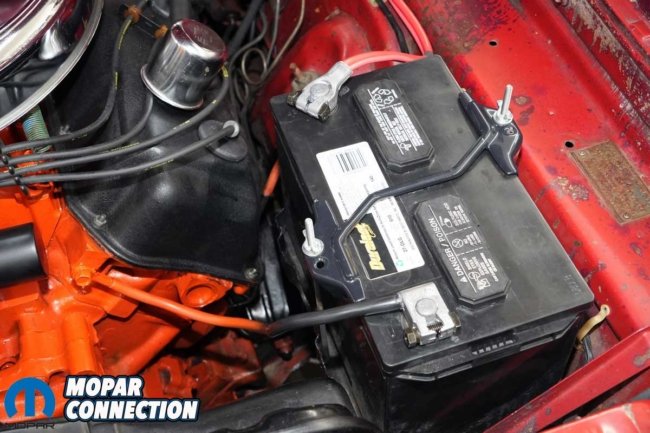
Above: The battery that came with the Road Runner was a low-maintenance type, and more than seven years old. We searched for a modern, maintenance-free battery with a flat top surface and only the terminals protruding, to better accommodate the reproduction topper.
If you are aiming to recreate the correct appearance of a factory-style Mopar battery, there are two routes to consider:
Option 1 – Real Reproduction Tar-Top Battery
• Companies like Restoration Battery by TurboStart and Battery Central Mall manufacture high-quality reproductions that not only look the part but also function as full-service batteries.
• These are concours-correct, but they are also pricey, sometimes double or triple the cost of a typical modern battery.
Above Left: We selected an Interstate Traveller Group 27 battery, removed the Interstate decal, and replaced it with a Mopar reproduction decal. Above Right: Our Interstate Group 27 battery was rated at 810 cold cranking amps, with 140 minutes of reserve capacity and a two-year warranty, plenty of power for our Hemi.
Option 2 – Battery Topper Over a Modern Battery
• A budget-friendly alternative for those seeking visual authenticity without sacrificing the reliability of a sealed, maintenance-free battery.
• These toppers are designed to snap over standard Group 24 or Group 27 batteries (brands like Interstate or Deka are common choices).
• Ideal for weekend cruisers, casual show cars, or restorations that lean more toward usability rather than museum-level detail.
Above Left: The YearOne hold-down (left) is slightly wider than the original, designed to accommodate the added width of the battery topper. Above Right: Since the topper can add height, YearOne includes longer J-hooks in the kit (left). Our battery was standard height, so we opted to reuse the original J-hooks with the new topper and hold-down.
Since our ’68 Road Runner originally came with a Group 27 battery, we sourced an Interstate Traveler model with 810 cold-cranking amps and 140 minutes of reserve capacity. Crucially, it had a flat top, essential for fitting the topper cleanly.
The primary differences between Group 24 and Group 27 batteries come down to physical size, capacity, and application. Both groups are commonly used in automotive, marine, and RV applications, and they can sometimes be used interchangeably, provided the battery tray or hold-down bracket allows it.
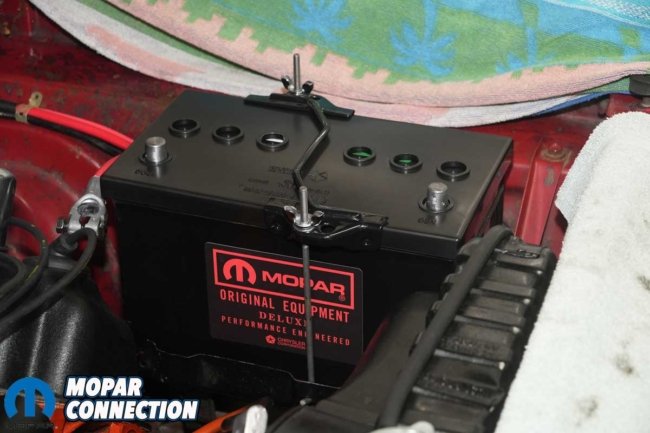
Above: We carefully fitted the battery topper over the Interstate unit. We reused the original J-hooks and installed the new, wider hold-down along with the included washers and wing nuts.
We then went hunting for visual enhancements. Original Mopar batteries featured six red caps and raised branding on the sides and top. To recreate the look, we located a vendor on eBay offering reproduction-style red battery stickers. The kit included a large Mopar decal for the side of the case and a smaller spec label for the top. Because our topper already featured molded-in markings in the correct locations, we chose to use only the side decal.
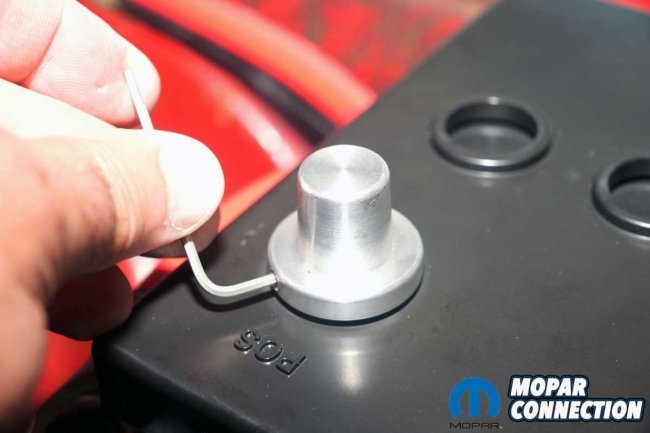
Above: The post extenders attach securely with two Allen screws each. Their shape and size match standard battery posts to ensure a snug fit with factory-style cable ends.
After peeling off the Interstate sticker, we applied the red Mopar graphic in its place. While the original battery would have had a molded black Mopar emblem, our sticker deviates slightly in color and style, but it looks the part and will stand out in the engine bay.
With the old battery removed and set aside as a core, we installed the new Interstate battery in the factory tray. The battery topper was placed over the top, without the caps installed, making sure it aligned with the positive and negative terminals.
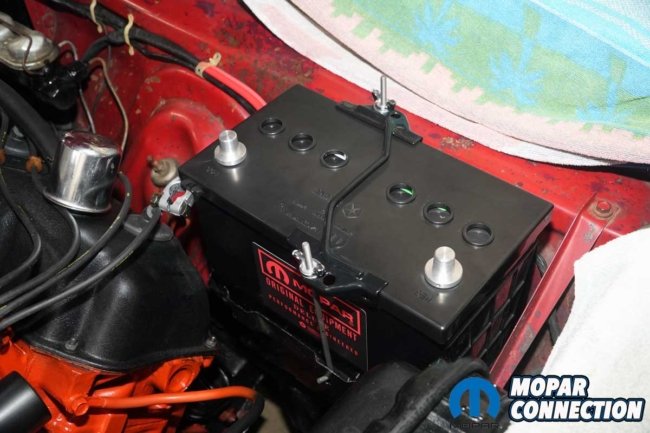
Above: Once the topper is in place, the extenders are installed over the posts. For authenticity, we mounted the J-hooks in the rear-most holes of the hold-down, just as the factory did in 1968.
The wider battery hold-down included in the YearOne kit fit snugly over the topper. Although the kit provides a slightly longer fender-mounted J-hook to account for taller batteries, our Interstate matched the original dimensions, so we reused the stock J-hooks along with the new washers and wing nuts.
The kit also included battery terminal extenders. The extenders bolt to the top of the existing battery posts (over the topper) using two Allen screws each, providing taller, more secure contact points for attaching the battery cables. We installed the positive cable first, then the negative, just as the service manual recommends.
Above Left: The battery cables fit neatly over the extenders, offering full contact area for optimal current flow, especially important during high draw starts. Above Right: Some restorers choose not to use the extenders. While the cables still tighten on the posts, clamping at the top of the tapered post can distort the terminal ends or lead to poor connections.
Some enthusiasts may prefer to skip the extenders and connect directly to the battery terminals. While this approach can work, it leaves a smaller contact area and requires extra caution during tightening to prevent damaging the terminal ends.
With the wiring secured, we installed the six red caps. They simply press into place, but if they feel loose, a dab of weather-resistant adhesive can keep them from rattling free.
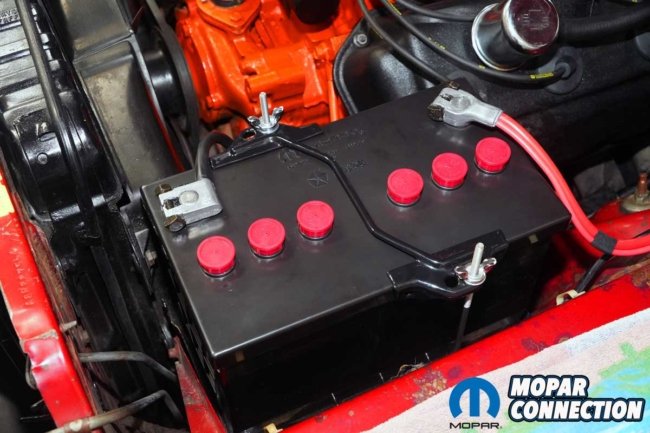
Above: We installed the caps into the battery topper, where they are held in place by friction. If any had fit loosely, a small amount of adhesive could have been used to secure them.
Stepping back, the transformation was immediately noticeable. With the red caps installed and the Mopar sticker in place, the battery looked right at home in a 1968 engine bay. The topper fit perfectly over the Interstate battery, with no visible gaps or mismatches. The effect is not just close, it is convincing.
While a reproduction battery might win more points in a judged concours event, the combination of a quality topper and a clean, modern battery is an innovative, affordable way to keep your classic looking right without compromising reliability.
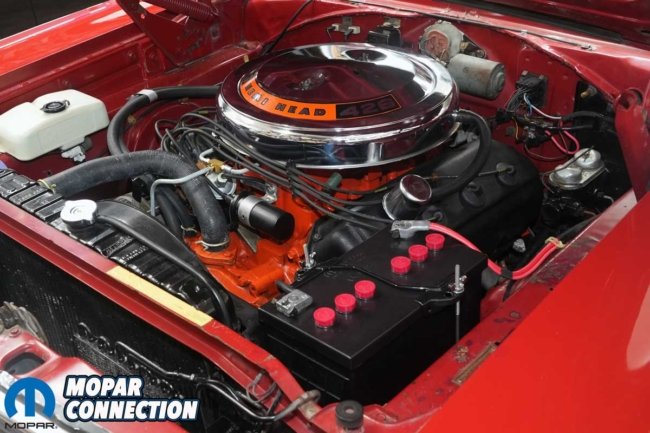
Above: The Road Runner’s engine bay is coming together beautifully. With the addition of the YearOne battery topper, we have taken another step toward an authentic and visually correct restoration.
Sometimes, it is the most minor changes that make the most significant difference, and this one strikes the perfect balance between period-correct and practical.
If you’re looking to restore or enhance your Mopar’s engine bay, YearOne offers a comprehensive selection of factory-correct and performance components, including battery accessories. For more information, visit YearOne or contact a sales representative at 1-800-932-7663, Monday through Friday, 9:00 AM to 6:00 PM Eastern Time.



